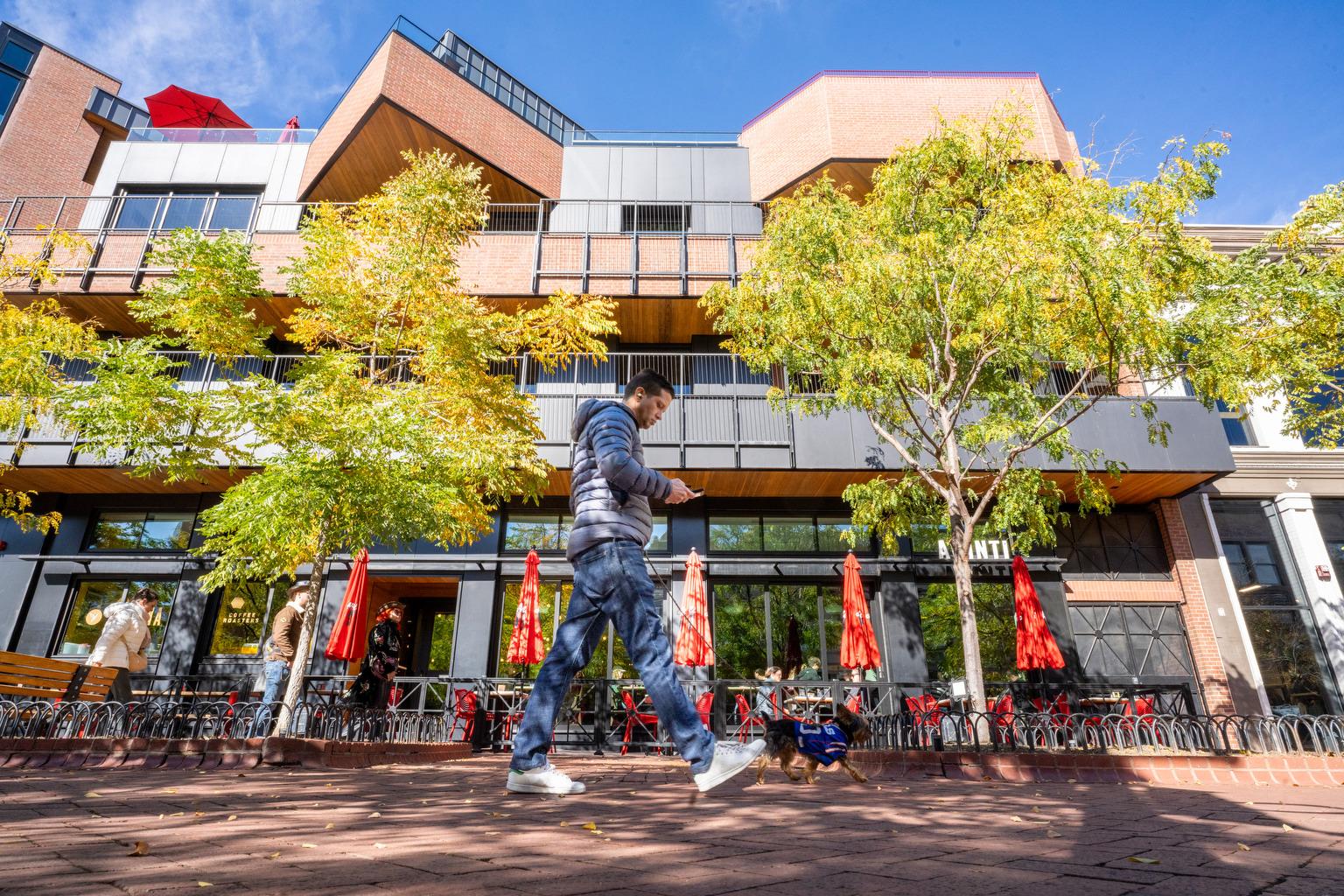
Denver writer Steve Knopper's new book, "MJ: The Genius of Michael Jackson," intentionally focuses on the late King of Pop's craft as a musician and a dancer rather than on the headline-grabbing moments of his personal life, and on Jackson's rise to fame from the youngest member of the Jackson 5.
"He’d spent his first five or six years on the planet with nothing but walls and boundaries, and by 1995 he wanted no limits at all. He refused to let race, gender, musical styles, family, even his own facial structure constrict him," Knopper writes. "Every time somebody tried to define him, he literally shifted his shape, altering his music, his clothes, his image, his nose."
Knopper spoke about the book with CPR's Andrea Dukakis.
Watch Michael Jackson's famous moonwalk performance in 1983 at "Motown 25," the 25th anniversary of Motown.
Read an excerpt:
Prologue: The trouble began when a janitor forgot to unlock the auditorium doors at Emerson High School, in Gary, Indiana, on September 26, 1927. A crowd gathered in the hallway and waited for first period to begin. Then two African-American students walked by. A white kid blurted out: “Let’s get out of here until they get rid of the niggers.” Within hours, six hundred white Emerson students, some on the football team, were parading down the streets of northern Gary, chant-ing, “Strike! Strike! Strike!” and “We won’t go back until Emerson’s white!” Strikers in cars drove in circles, honking horns, disturbing the peace, frightening passersby. The local Post-Tribune sensationalized the crisis, printing bold headlines: ‘e’ strikers vote to remain ‘out.’ It seems William A. Wirt, the superintendent who had run the Gary schools since the city had opened for business twenty years earlier, had miscalculated. Before the semester began, he realized Gary’s black schools didn’t have enough space to accommodate the three thousand African-American students enrolled in the fall, so he relocated fifty of them to a handful of white schools. Emerson received eighteen. (It wasn’t Emerson’s first influx of black students, but school officials had carefully screened the few earlier kids for what they considered high intelligence, good manners, and light skin, so as not to attract too much attention.) The superintendent insisted segregation did not belong in Gary, but he took no action against the strikers. The students’ ringleader, Winfield “Junior” Eshelman, was a member of the swim team who wore a blue-and-white athletic sweater and calmly delivered his demands to the press and school officials. “The strikers are firm in their belief that a colored line must be drawn, and Emerson made a white school,” Eshelman said. Facing mayoral pressure to resolve the problem, Wirt and Gary’s city council compromised. They granted the strikers “excused absences.” They transferred fifteen of the eighteen black students to temporary schools. They set up a temporary school facility for blacks with $15,000 in city money. And they agreed to allocate $600,000 to build a permanent all-black school, far away from Emerson. The Post-Tribune was euphoric: strike off; all happy. Gary, Indiana, had not been built for African-Americans. Once a region of swampy marshland and sandy dunes, Gary’s location on the lower shore of Lake Michigan attracted oil and steel companies at the turn of the twentieth century. In 1907, oilmen bought nine thousand acres of land and announced plans to spend $65 million on massive plants. U.S. Steel would provide living quarters for loyal workers. The steel giant’s Gary Land Company built 506 houses and quickly added more, but at fourteen dollars per month, even the cheapest homes were too expensive for the mill workers, who made 16.7 cents an hour. By 1911, overcrowding was a problem. Garbage was everywhere. Barely born, Gary was quickly segregating into two cities, for rich and poor. The former, on the north side, contained tony establishments such as the Binzenhof pub and the Hotel Gary. The latter would attract two hundred saloons over three years, with names like Jack Johnson’s Gambling Joint and the Bucket of Blood. Executives and skilled workers called this southern part of town the Patch, or the Other Gary. The all-black Roosevelt High School, created from segregation, opened in the heart of the Other Gary on April 19, 1931. Eighteen years later, across a narrow alley from Roosevelt’s track field, a one-story house would appear on the corner of Jackson Street and West Twenty-Third Avenue. It was roughly thirty feet long and twenty-five feet wide, with ten tall windows, impeccable white siding, and a brick chimney at the top. The address was 2300 Jackson Street. Within a couple of years, Joseph Jackson, a construction worker, would use his savings and some money from his new wife’s stepfather to buy the tiny house, as well as a refrigerator, a stove, and a bed. Joseph and Katherine would raise nine children—six boys and three girls. The oldest boy would play baseball for Roosevelt High. He and four of his brothers would sing “My Girl” at a talent show in the Roosevelt auditorium. One of the youngest brothers would spin around and around and around, mesmerizing the audience. Years later, Michael Jackson argued with Rupert Wainwright, director of one of his short films—a teaser video for the HIStory: Past, Present and Future, Book 1 album. Michael wanted to display a four-hundred-foot statue of himself in the film. Wainwright gently pushed back: “Some people might think it’s slightly vainglorious,” the Brit- Jackson told Wainwright the statue wasn’t so much a representation of himself as it was a “symbol of music.” Wainwright said that was worse than a statue. Michael called him dumb. Wainwright said maybe he was. How many records had Wainwright sold? “You have lots of statues where you’re from,” Michael finally told the director. “I live in LA,” Wainwright said, confused. “In England, you have statues. You have statues of that woman all over the place.” “Which woman?” “The queen.” “Excerpted from MJ: The Genius of Michael Jackson by Steve Knopper. Copyright © 2015 by Steve Knopper. Reprinted with permission of Scribner, a Division of Simon & Schuster, Inc.” |









